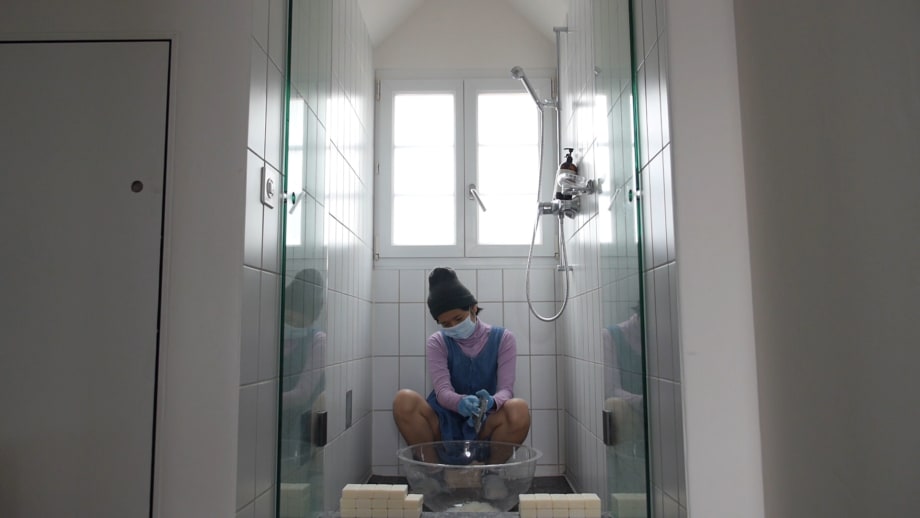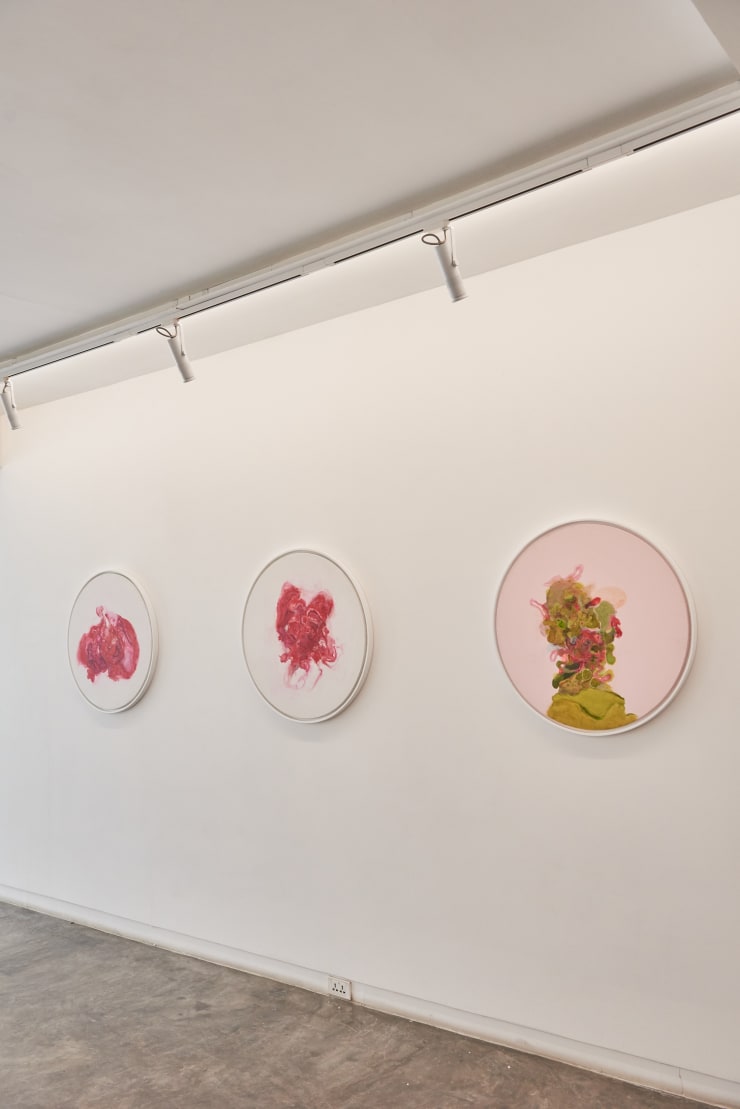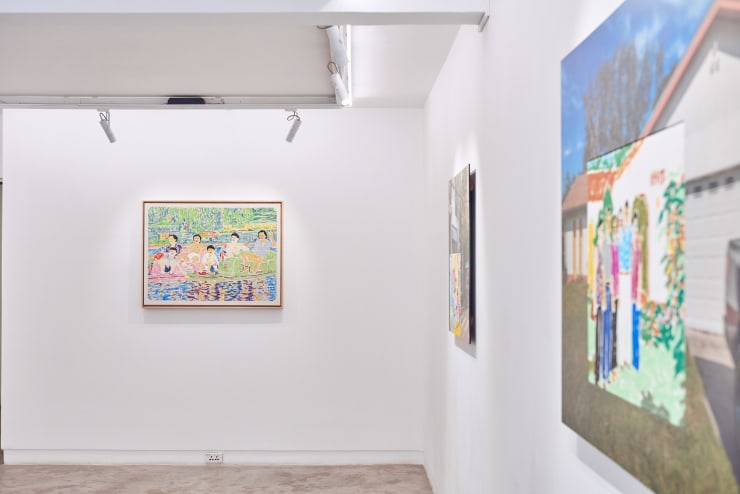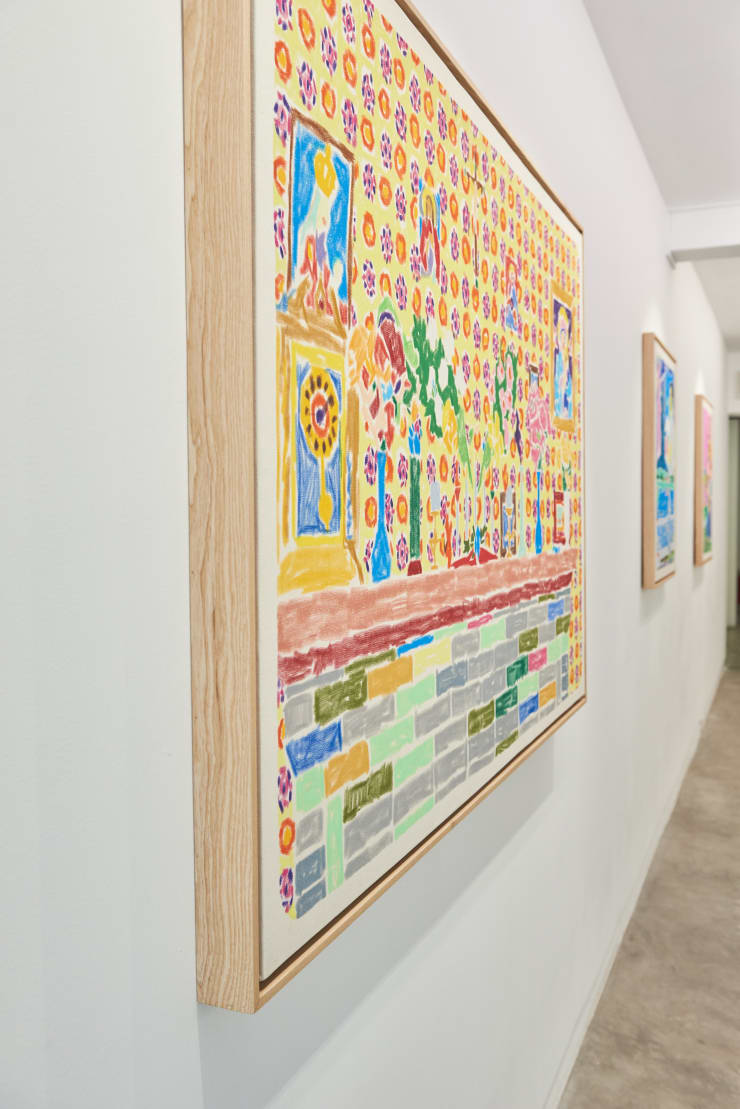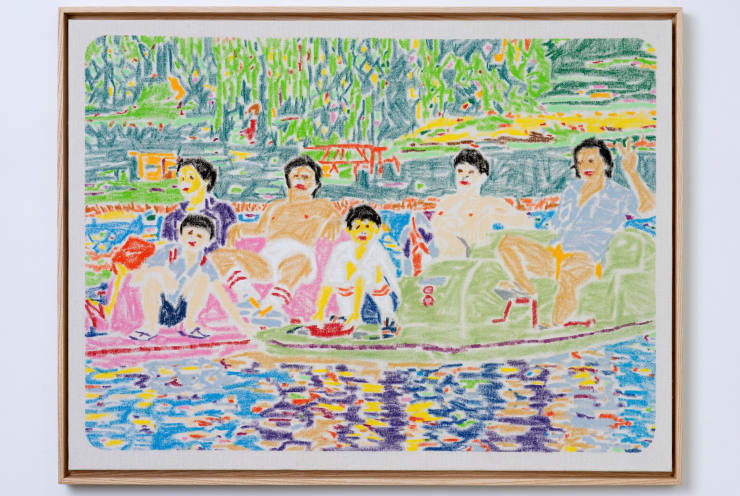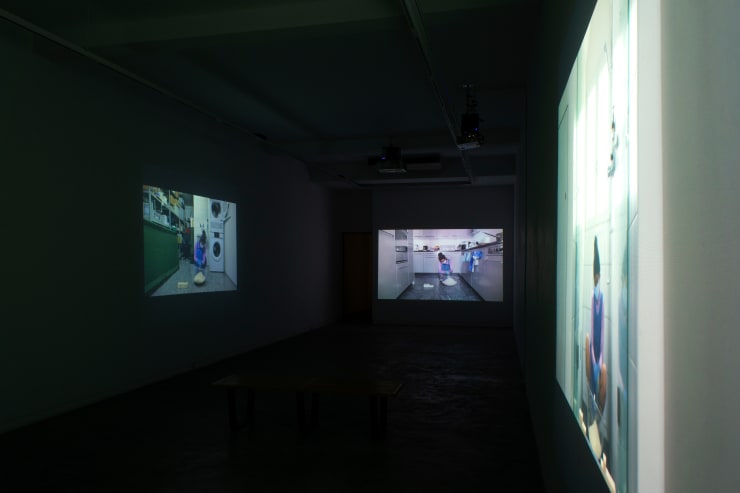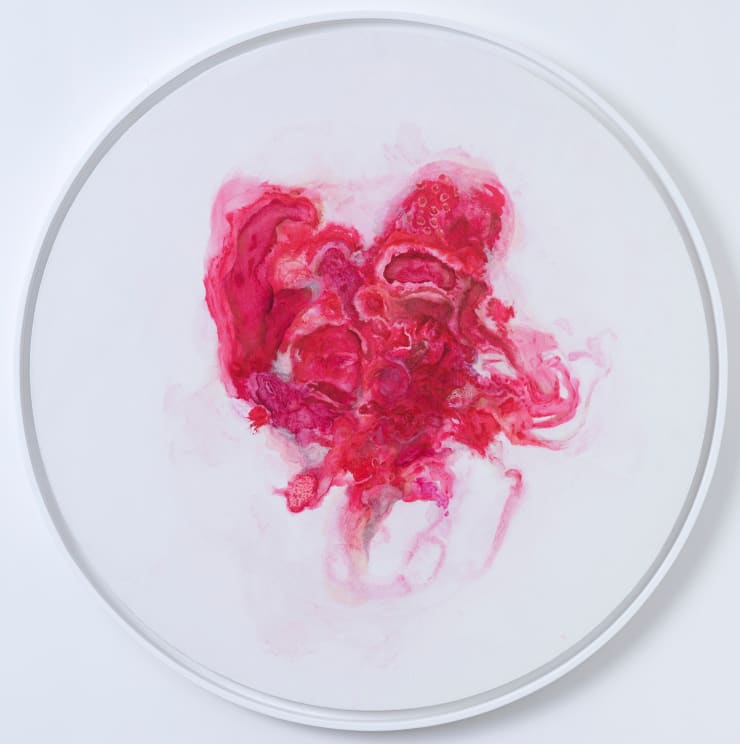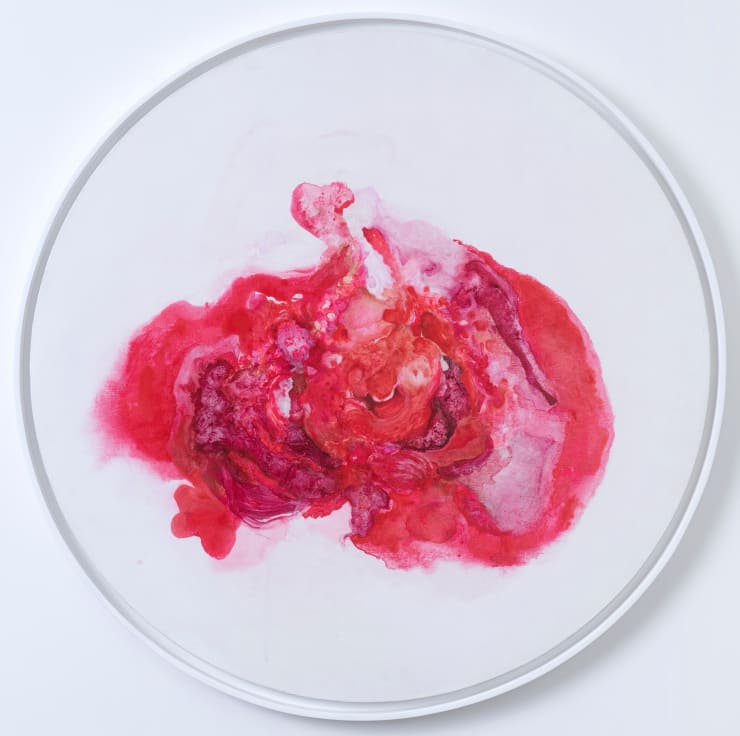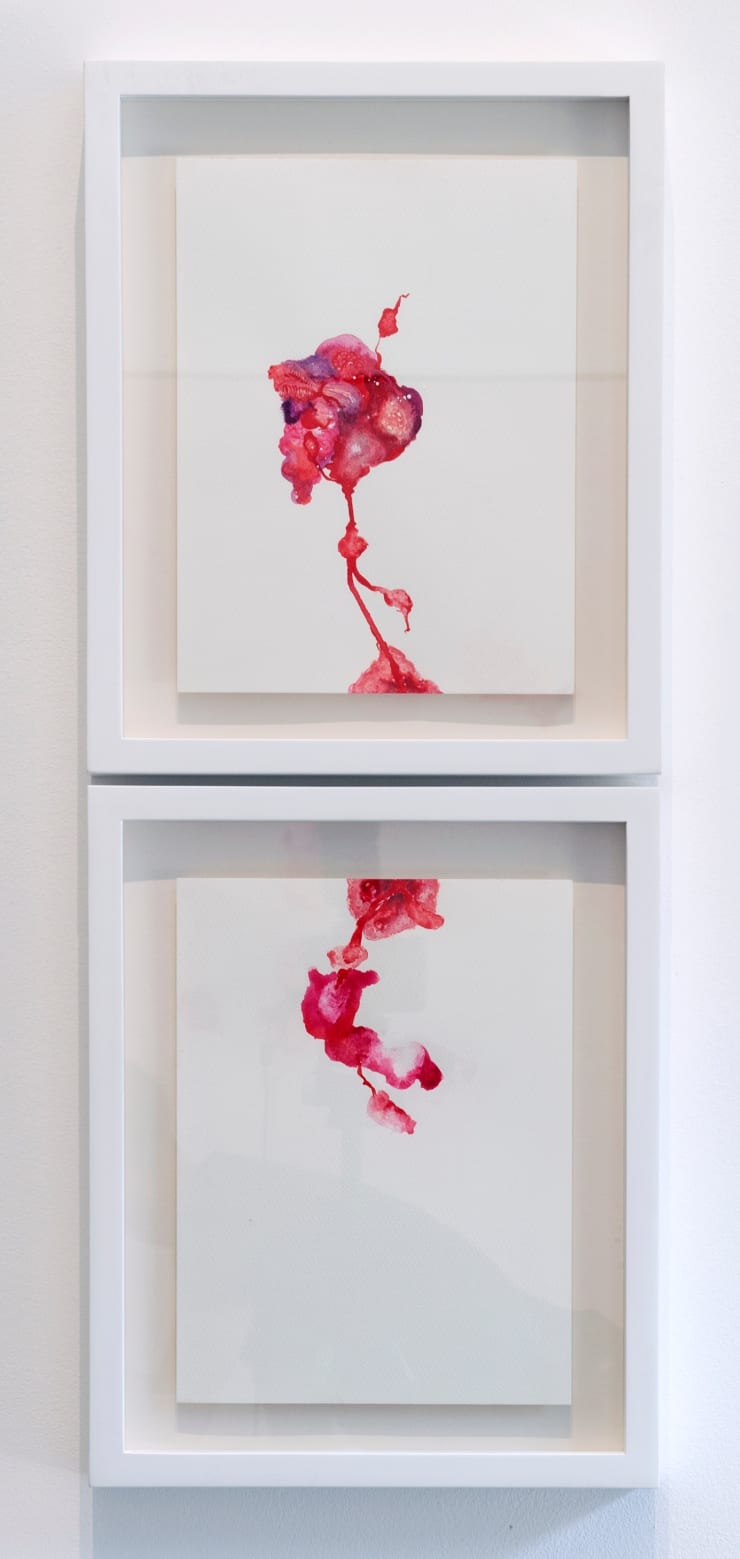familiar: Group Exhibition
Past exhibition
Overview
familiar, the term paradoxically conveying both something you know well, but also something you can’t quite pinpoint, explores the endless possibilities of the body — not just as a bundle of functions designed for survival, but as a source and site of culture and memory. Though the body is an ever-present “vessel” integral to our being-in-the-world, we are nevertheless poorly attuned to it — a legacy of Cartesian thought that separates intellect and body, and mistrusts embodied ways of knowing. Yet far from being a blank slateonto which memory is coded and culture inscribed, the body is constantly, and often implicitly, creating, learning, and remembering (one thinks of what comes naturally to the body without the need for conscious effort: moving to music, performing rituals, or fitting back into the family dynamic after having been away). Featuring the works of Nadège David, Trong Gia Nguyen, and Xuân Hạ, familiar thus surveys the bodily experience, and its vital yet largely overlooked role in mediating, as well as expressing perception, memory, and culture.
In rendering the body and its parts as amorphous forms, Nadège David conveys the necessity of re-acquainting oneself with one’s own body, though focusing on the sensorial experience, rather than the medical understanding, of “body”. Delicate yet visceral, her works re-interpret flesh using not its scientific forms, but through the perception of how our organs and parts feel as they sit within the body: their weightedness, their subtle yet constant movement, their alien existence of being always there but never seen. As the artist delves deeper into how we inhabit our bodies, the figure of the body is, perversely (or perhaps inevitably), no longer discernible. Head, torso and legs now mutate into quasi-Rorschach abstractions that seem to unceasingly twist and bend and grow and morph. David’s kitsch-pink shapes blend with the green of nature as the body opens onto the world, collapsing the distinction between itself and its environment.
As David destructures the physical body and re-imagines how it interacts with its surroundings, Trong Gia Nguyen instead uses his body as a method to process memory. Though drawing from the rare family stories and photographs that have remained, Nguyen’s works are far more than just recollections rendered as paintings. It holds true that the artist here is an observer and archivist of his family history — collecting data, processing information, deciphering meaning. More essentially, however, as he manipulates the canvas he embodies those memories — placing his physical and mental self in an imagined space and time, and reconstructing the past through his personal distortions. Indeed, the artist’s choice of medium is deliberately performative: the act of drawing in oil pastel suggests a reversion to childhood, where one’s first artistic expressions are done in bright crayon. In a manner both self-aware and trying to signal that he is self-aware, Nguyen acknowledges that memory does not belong to the past, but exists very much in the present as an embodied interaction between the story and storyteller. To remember is to acknowledge that one cannot remove the body from oneself, or more accurately oneself from oneself.
In further exploring the possibilities of the body, Xuân Hạ’s video performance treats the body as a literal site of memory. Re-enacting her own and many other mothers who do housework sitting on a tiny stool, the artist relentlessly grates bars of soap — the filings replaced detergent, which was not widely available in the 90s of her childhood. When taken out of context, this humble and thankless task becomes absurdly theatrical. Despite performing the chore in its usual locations — the bathroom, the kitchen, the laundry room — the artist strips the task of its functionality: she grates soap not to use the end product, but merely to document the process. Xuân Hạ places the action centre stage as if to contend that to mimic her mother is to remember her mother (even if her thoughts have trailed off elsewhere).
The varied works of Nadège David, Trong Gia Nguyen, and Xuân Hạ are less a spotlighting than a quiet reminder that the body is a locus of knowledge and creativity, mediating our interactions and storing our experiences. It is through the body, in all its abstractions and biases and theatricalities, that we engage the world.
Installation Views
Works
-
 Nadège David, La nature sensible des choses (The sensitive nature of things), 2020
Nadège David, La nature sensible des choses (The sensitive nature of things), 2020 -
 Nadège David, De vivantes poitrines jailliront des rameaux 1 (Living busts will sprout from branches 1), 2020
Nadège David, De vivantes poitrines jailliront des rameaux 1 (Living busts will sprout from branches 1), 2020 -
 Nadège David, Soi-même se mangea (Self-consumed), 2020
Nadège David, Soi-même se mangea (Self-consumed), 2020 -
 Nadège David, De vivantes poitrines jailliront des rameaux 2 (Living busts will sprout from branches 2), 2020
Nadège David, De vivantes poitrines jailliront des rameaux 2 (Living busts will sprout from branches 2), 2020 -
 Nadège David, La communauté des sentiments #1 (Community of feelings #1), 2014
Nadège David, La communauté des sentiments #1 (Community of feelings #1), 2014 -
 Nadège David, La communauté des sentiments #2 (Community of feelings #2), 2014
Nadège David, La communauté des sentiments #2 (Community of feelings #2), 2014 -
 Nadège David, La communauté des sentiments #3 (Community of feelings #3), 2014
Nadège David, La communauté des sentiments #3 (Community of feelings #3), 2014 -
 Nadège David, La communauté des sentiments #5 (Community of feelings #5), 2014
Nadège David, La communauté des sentiments #5 (Community of feelings #5), 2014 -
 Nadège David, J/ψ - 1,2, 2015
Nadège David, J/ψ - 1,2, 2015 -
 Trong Gia Nguyen, Family, Enid, circa 1980, 2021
Trong Gia Nguyen, Family, Enid, circa 1980, 2021 -
 Trong Gia Nguyen, Father, Triple Exposure, Guam 1975, 2021
Trong Gia Nguyen, Father, Triple Exposure, Guam 1975, 2021 -
 Trong Gia Nguyen, Enid, circa 1982, 2019
Trong Gia Nguyen, Enid, circa 1982, 2019 -
 Trong Gia Nguyen, Enid, Meadowlake Park, circa 1981, 2019
Trong Gia Nguyen, Enid, Meadowlake Park, circa 1981, 2019 -
 Trong Gia Nguyen, Orlando, Jepson Street, 2017
Trong Gia Nguyen, Orlando, Jepson Street, 2017 -
 Trong Gia Nguyen, 134 Nguyen Truong To, 2017
Trong Gia Nguyen, 134 Nguyen Truong To, 2017 -
 Xuan Ha, Fragmentation of Memory, 2019
Xuan Ha, Fragmentation of Memory, 2019
